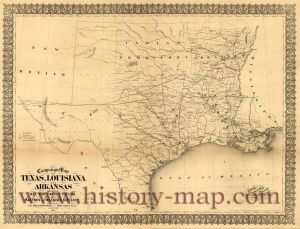 The war challenges Baptist higher education throughout the Confederacy. Already on the rise in the decade prior to the war and rivaling Methodist efforts, Baptists of the South, despite the national conflict, are yet evidencing some scholarly energy.
The war challenges Baptist higher education throughout the Confederacy. Already on the rise in the decade prior to the war and rivaling Methodist efforts, Baptists of the South, despite the national conflict, are yet evidencing some scholarly energy.
This weeks Houston Tri-Weekly Telegraph reports:
Waco University, under the direction of the Baptists, opens its present session with over 80 students—and still they come. The sons of indigent soldiers are educated free—yet there is room.
Waco Female College, under the control of the Methodists, opens with over 100 students—still they come, and yet there is room. The city of Waco is proud of her literary institutions.
Waco University’s roots go back to 1856, when the Trinity River Baptist Association established Trinity River High School, a preparatory school. Classes were initially held at Waco Baptist Church, until land was acquired in Waco, after which the Waco Baptist Association in 1860 assumed ownership of the institution, renaming it Waco Classical School. In 1861, the school’s principle resigned to join the Confederate Army, and Rufus C. Burleson, president of Baptist’s Baylor University in Independence, was named as the school’s new president. Moving to Waco, Burleson brought along his Baylor faculty — both Burleson and the faculty being dissatisfied with developments at Baylor — and renamed the Waco institution Waco University.
Waco University survives the war by focusing primarily on preparatory classes, returning to a collegiate focus in the post-war years. In 1886, Waco, now under ownership of the Baptist General Convention of Texas, consolidates with Baylor University, with Baylor retaining its name and moving to the Waco campus.
Sources: “Waco University and Female College, Houston Tri-Weekly Telegraph, October 1, 1862 (link); “Waco University,” The Texas Handbook Online, Texas State Historical Association (link); “Rufus Columbus Burleson,” The Texas Handbook Online, Texas State Historical Association (link)


